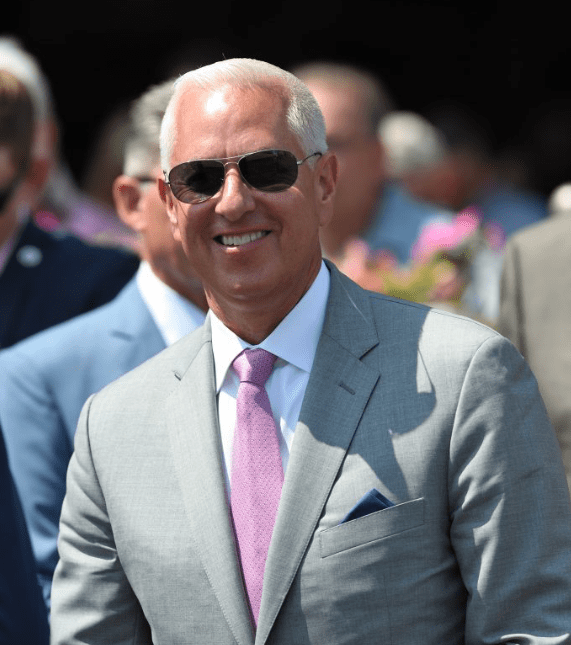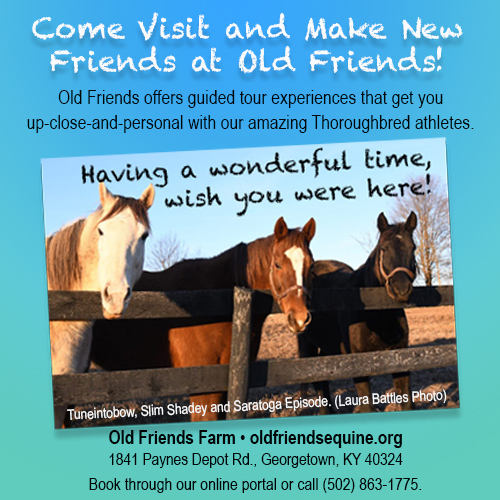
It was horse racing’s own Rocky story – a small time trainer nursing a broken foot trailering his longshot Derby hopeful 1,700 miles to Churchill Downs. A rail-skimming ride and a supernova of a stretch run later and Mine That Bird had pulled off one of the Derby’s most shocking upsets. Cut to his trainer Chip Woolley, hobbling on crutches into the winner’s circle. The trainer out of nowhere had just captured America’s most famous race with his 50-1 no-shot-in-hell horse. Admit it, you choked up. Everyone did. Heck, they even made a movie about it. But in the years following that David vs. Goliath Kentucky Derby victory, there has been less of these average Joe trainers winning the big races. A recent news story reports that just four trainers – Steve Asmussen, Bob Baffert, Chad Brown, and Brad Cox – have won 41% of North America’s Grade One races this year.
Welcome to the age of the “Super Trainer”.
The term Super Trainer was first coined back in the 1980s for none other than D. Wayne Lukas. And he was indeed super – winning four Kentucky Derbies, six Preakness and four Belmonts on his way to five Eclipse Awards and an induction into the U.S. Racing Hall of Fame. He had a front row seat at the yearling sales and knew how to spot a golden goose for owners such as Gene Klein, Michael Tabor, and Bob and Beverly Lewis. Backstretch workers would whisper, “Wayne off the plane,” whenever he shipped a horse in to race. It was a warning – if Lukas took the time and effort to fly a horse in for a race, he damn sure was going to win it. And he did. Lukas also had horses stabled at major tracks from coast to coast. You couldn’t watch a Triple Crown or Breeders’ Cup broadcast with being blinded by his toothy grin. Three of his assistants – Todd Pletcher, Kieran Mc Laughlin, and Dallas Stewart – went on to become star trainers in their own rights.
In the years following the Reign of Wayne, the business model of racehorse ownership has changed. Instead of multiple horses being owned by one entity such as a Gene Klein, you now have partnerships with multiple shareholders owning a single horse. Many voices with many hands in the pot make it difficult to keep everyone happy. But there is one thing that these partnerships can agree on when they look for a trainer – they want the one with the best win percentage. And no one has a higher win percentage than Super Trainers. Why? For starters, they are given the cream of the crop yearlings and can afford the very best in feed, riders, veterinarians and farriers. Top horses = high win percentage.
But there’s also another way Super Trainers can maintain a high win rate – by dropping horses down in class. Smaller stables can’t afford to risk losing a decent runner for the sake of one win – they need that “day money”, aka, training fees, not to mention the all-important ten percent of the winning purse money. Meanwhile, the large stables don’t care if a horse gets claimed, they can just claim another. They just want the win. So, the small time trainer runs his $10,000 claimer in the right spot and watches it get trounced by a Super Trainer’s $20,000 drop down.
No wonder why so many trainers have left the game.
In 2000 there were 9,885 racehorse trainers but by 2019 that numbered had dropped to 4,958 – a decline of 49.8%. And guess who is benefitting from their departures? Super Trainers. In 2000 the top ten trainers had 2.2% of starters but by 2019 that number had leapt to 6.3%. So what, you say, why care about the loss of a few “small-timers”? For starters, average trainers fill races. Seventy percent of trainers race less than 20 horses per year and yet those horses account for 25% of starts. Without them, tracks would have less races with smaller fields and even fewer betting prospects. According to Jockey Club data, average field sizes shrank from 8.1 to 7.5 from 2000 to 2019. During that same period average starts in a year per horse fell from 7.1 to 6.2. Without these average Joes, we could be facing a future where every race has a four horse field.
“But I want my horse to be trained by Mr. Super Trainer, not some schmuck I never heard of!” cries the Big Racing Partnership. That’s their choice. If their horse is a Triple Crown or Breeders’ Cup candidate, then Super Trainer is indeed who they’re going to get. However, most Super Trainers employ assistants for a reason – they can’t be at two or three different tracks at the same time. So while partnerships might be paying the Super Trainer fees, their little allowance runner might not be getting much of that Super Trainer’s attention. But every time that allowance horse wins, his victory will be added to the Super Trainer’s national tally.
What many of these partnerships fail to realize is that trainers don’t start out as super. Both D. Wayne Lukas and Bob Baffert kicked around the Quarter Horse tracks before finding gold with the Thoroughbreds. But nowadays, the chance for a small trainer to rise up out of the claiming leagues is shrinking. Many small timers have had promising young horses whisked off to larger stables the second they’ve broken their maidens, even though they were the ones who’d broken them as yearlings and laid down the all-important foundation conditioning. These trainers might not be “super” but many have taken cast-offs from larger stables and won with them. These dedicated men and women put in seven day work weeks, don’t know what “vacation” means, and can identify every horse in their care blindfolded simply by running their hands down its legs. Every one of them dreams of having a Chip Woolley Derby moment – all it takes are owners willing to give them that chance.
Photo: NYRA Photo, Coglianese Photos
For info on the Best Breeders’ Cup Seminar click HERE.


